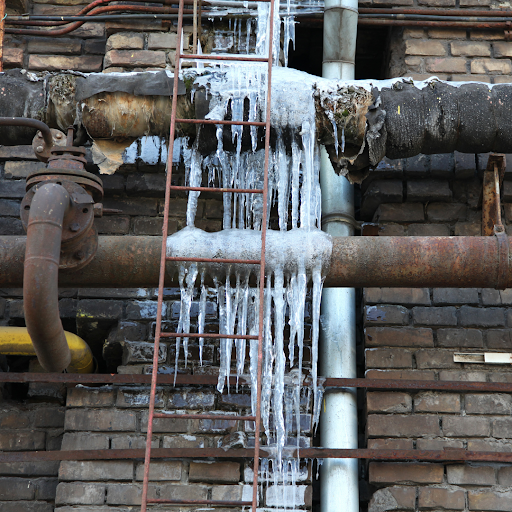Key Approaches for Preventing Frozen Pipes in Winter
Key Approaches for Preventing Frozen Pipes in Winter
Blog Article
We have found this great article pertaining to Helpful Tips to Prevent Frozen Pipes this Winter directly below on the net and reckoned it made perfect sense to quickly share it with you on my blog.

Winter can wreak havoc on your pipes, particularly by freezing pipelines. Right here's just how to avoid it from occurring and what to do if it does.
Introduction
As temperatures drop, the danger of icy pipelines boosts, possibly bring about costly repairs and water damage. Understanding how to avoid frozen pipes is important for property owners in chilly environments.
Avoidance Tips
Shielding susceptible pipes
Wrap pipelines in insulation sleeves or make use of warm tape to secure them from freezing temperatures. Concentrate on pipes in unheated or external locations of the home.
Home heating strategies
Keep indoor rooms sufficiently heated up, especially locations with plumbing. Open up cabinet doors to allow cozy air to distribute around pipelines under sinks.
Exactly how to determine icy pipes
Try to find lowered water flow from faucets, uncommon odors or noises from pipes, and noticeable frost on revealed pipes.
Long-Term Solutions
Structural changes
Think about rerouting pipelines away from outside wall surfaces or unheated areas. Add extra insulation to attics, cellars, and crawl spaces.
Updating insulation
Purchase high-grade insulation for pipelines, attics, and wall surfaces. Correct insulation assists keep constant temperature levels and reduces the threat of frozen pipelines.
Safeguarding Exterior Plumbing
Garden hose pipes and outdoor taps
Separate and drain pipes yard tubes prior to winter season. Install frost-proof spigots or cover exterior taps with shielded caps.
Recognizing Frozen Pipelines
What creates pipelines to ice up?
Pipes ice up when exposed to temperatures below 32 ° F (0 ° C) for expanded durations. As water inside the pipes ices up, it broadens, putting pressure on the pipeline wall surfaces and possibly triggering them to rupture.
Threats and damages
Icy pipelines can lead to water supply disruptions, building damages, and pricey repair work. Burst pipes can flooding homes and create comprehensive structural damage.
Indications of Frozen Piping
Determining icy pipelines early can avoid them from breaking.
What to Do If Your Pipelines Freeze
Immediate actions to take
If you presume icy pipelines, keep taps available to relieve stress as the ice thaws. Use a hairdryer or towels taken in hot water to thaw pipes gradually.
Final thought
Stopping icy pipelines calls for positive steps and quick reactions. By recognizing the causes, indications, and preventive measures, homeowners can shield their pipes throughout cold weather.
6 Proven Ways to Prevent Frozen Pipes and Protect Your Home
Disconnect and Drain Garden Hoses
Before winter arrives, start by disconnecting your garden hoses and draining any remaining water. Close the shut-off valves that supply outdoor hose bibs and leave the outdoor faucet open to allow any residual water to drain. For extra protection, consider using faucet covers throughout the colder months. It’s also important to drain water from any sprinkler supply lines following the manufacturer’s directions.
Insulate Exposed Pipes
Insulating your pipes is an effective way to prevent freezing. Pipe insulation is readily available at home improvement stores and is relatively inexpensive. Pay close attention to pipes in unheated areas such as the attic, basement, crawl spaces, or garage. Apply foam insulation generously to create a buffer against the cold. You can also wrap your pipes in heat tape or thermostat-controlled heat cables for added warmth.
Seal Air Leaks
Inspect your home for any cracks or openings that could let in cold air. Seal any holes around the piping in interior or exterior walls, as well as the sill plates where your home rests on its foundation. Additionally, make sure to keep your garage door closed unless you’re entering or exiting. Leaving it open creates a significant air leak that can lead to frozen pipes.
Allow Warm Air Circulation
During cold snaps, it’s essential to allow warm air to circulate evenly throughout your home. Leave interior doors ajar to promote better airflow. Open kitchen and bathroom cabinets to help distribute heat consistently around the rooms. If you have small children or pets, be sure to remove any household chemicals or potentially harmful cleaners from open cabinets for safety.
Let Faucets Drip
A small trickle of water can make a big difference in preventing ice formation inside your pipes. When temperatures drop significantly, start a drip of water from all faucets served by exposed pipes. This continuous flow helps prevent the water from freezing. Additionally, running a few faucets slightly can relieve pressure inside the pipes, reducing the chances of a rupture if the water inside does freeze.
https://choateshvac.com/6-proven-ways-to-prevent-frozen-pipes-and-protect-your-home/

I discovered that blog entry about 6 Ways to Prevent Frozen Pipes when browsing the internet. Liked our post? Please quickly share it. Let someone else find it. Thank you so much for your time invested reading it.
Book Your Appointment Report this page